Anyone paying a bit of attention to local news knows Englewood is a Chicago neighborhood where a lot of shootings occur and where there are plenty of struggles. It gets more bad press than most.
But Englewood is more than that. It’s also a community where many people who care are working hard to try to improve it.
That fact hit home one early Saturday morning in September when the Chicago Advisory Redistricting Commission gathered to listen to residents’ needs and concerns.
Linda Austin beamed as she spoke about efforts to rebuild housing and clean up the area around 1600 South Green St.
“We’re trying to get rid of the graffiti, the abandoned houses. We got too many churches, too many liquor stores,” she said. “We just have to make sure that, when you think of a community, especially in Englewood, you want to make sure that you can be proud of where you live.”
But if Linda Austin needs help with cleanup or housing rehab work, she might have to reach out to six different aldermen because Englewood currently is split up among six different wards.
Resident Rodney Johnson, of One Health Englewood, said other nearby neighborhoods make up the majority of many of those wards and that results in his community being neglected.
“If you’re only 35% of the ward, then you cannot hold the actual person accountable for your community,” he said. “As of now, more people vote outside of their community than vote inside a community. So, it’s all lip service.”
The 13 independent commission residents from throughout Chicago who listened to people in Englewood, Chinatown, West Rogers Park and many more neighborhoods talk about their communities were not paying lip service.
After 41 open and livestreamed training sessions, meetings and hearings from June to October, the commissioners worked diligently to honor, as best they could, what Chicagoans said they wanted for their neighborhoods.
They created a map for Chicago, by Chicagoans. And now, if 10 of the 50 council members in Chicago can be persuaded to support the people’s map, Chicagoans could get a chance to vote in an election next year to determine whether they prefer that map or those drawn in a closed back room, the traditional city ward mapping process.
With 77 Chicago neighborhoods, but 50 wards created by law in Chicago, keeping all communities whole, like Englewood, wasn’t possible, but commissioners “worked diligently to unify communities that have been split up for political spoils,” noted Commissioner Mike Strode of the South Deering neighborhood. Other communities they were able to keep mostly whole in their ward map are Austin, Avondale, Back of the Yards and Logan Square.
Throughout the past four months, these diverse, yet typical Chicagoans worked together to focus representation for the next 10 years on their neighbors and what they want and need.
They tweaked borders in Rogers Park to better align with school boundaries. They made the difficult choice to redraw some borders south of the Loop to create the city’s first Asian majority population ward.
They listened and responded when Phyllis Logan, first vice president of the NAACP West Side branch, told them, “East and West Garfield, North Lawndale, the Greater Austin area are three minority majority black communities on the West Side. We have access to the Green and the Blue transit lines and local major bus lines. Many use public transportation to get to the downtown Chicago area, both major airports, jobs and the lakefront. We need to keep our three minority majority communities as they are.”
People of different races, ethnicities and faiths from all over Chicago talked about keeping their kids safe, affordable housing, convenient transit, access to healthy food, good schools, the need for safe spaces for children and seniors to walk and ride bikes. They understood how a better ward map could improve the chances of making these things happen.
Typical residents from every region of the city came together and invested the time in open gatherings to listen to their neighbors and create the people’s map.
“This is historic,” Commissioner Graciela Covarrubias of Avondale said when the work was done. “Never before have the people of Chicago been given a seat at the table to chart a possible future for themselves. Never before has their work been conducted with them, on nights and weekends, in full view of any resident who wanted to join.”
Shouldn’t that history be honored? Shouldn’t the people of Chicago get the chance to vote and choose which ward map will best work for them for the next 10 years?
Madeleine Doubek is executive director of Change Illinois, a nonpartisan nonprofit advocating for ethical government. It is supporting the work of the Chicago commission.
The article originally appeared on Crain’s Chicago Business.
